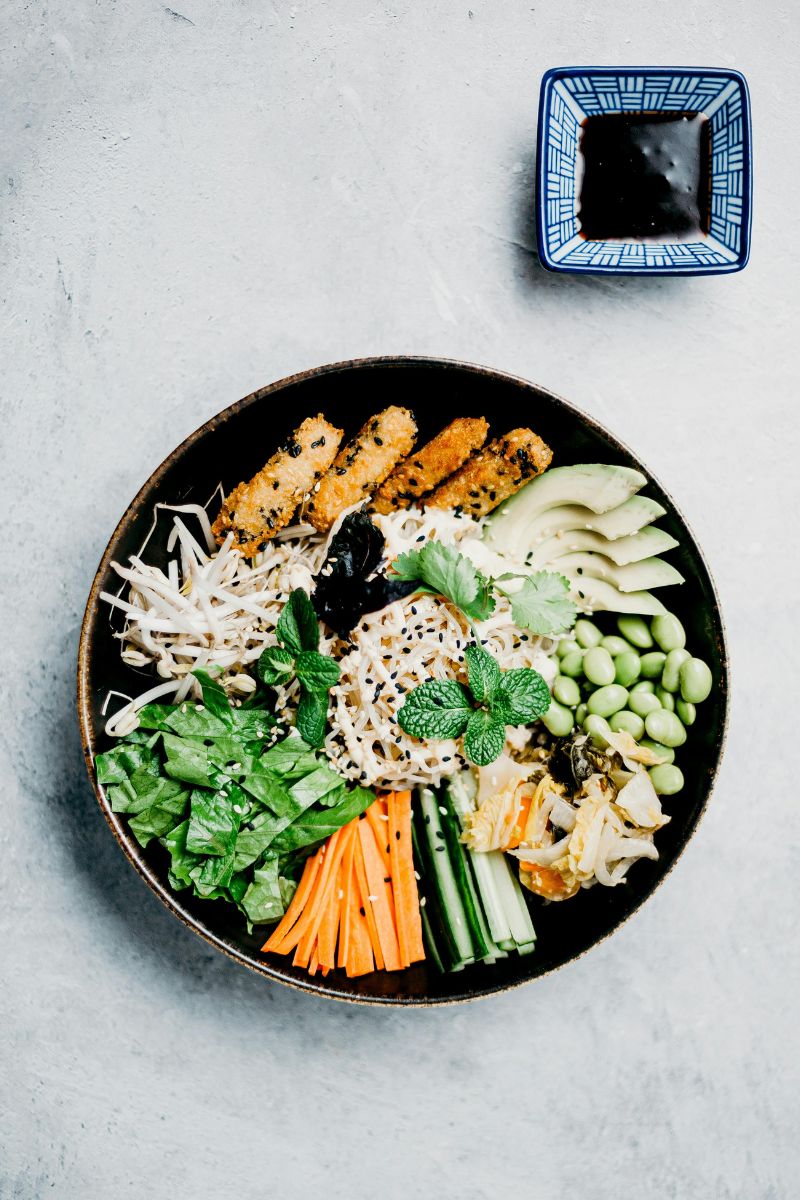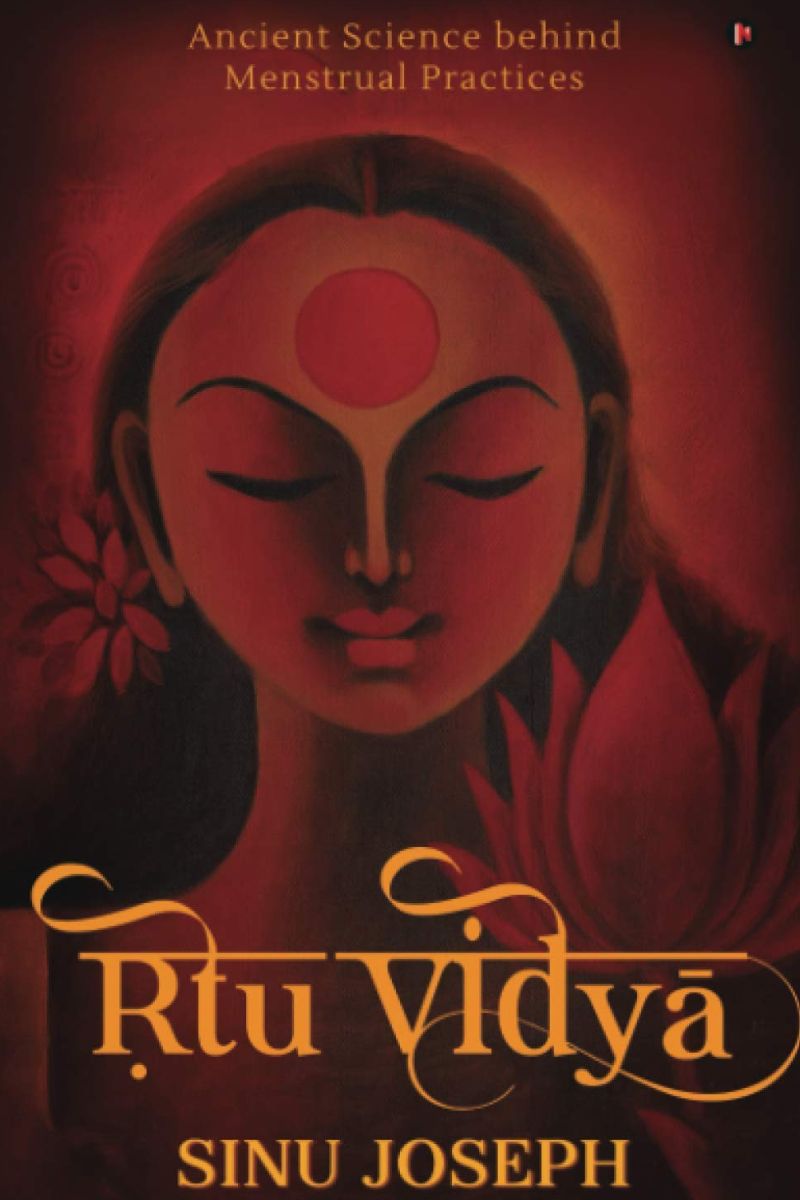
Om Namah Sivaya
Blessed Self,
For many years Swamiji told us that ‘humility’ was the first lesson he had received from his master. Until his departure from the physical body, Swamiji attributed all of his success to his guru Swami Sivananda. As staff, the more we reflect on this idea the more we are able to connect with students or seekers.
Even during the off season, all three ashrams in South India are thriving with both Yoga Vacation guests and Ayurveda programmes running successfully. Our ashram in the Himalayas is in its high season and receiving a steady stream of guests from all over the world.
Though attendance at our city centres fluctuates due to various local conditions, they consistently receive new students and work to impart the knowledge of yoga with sincerity and simplicity.
When we practice humility, it better enforces our sadhana and service. Attributing any successes to our Guru and Teacher, Swami Vishnudevananda reminds us of why we are here on the path. Connecting with each guest not only inspires us but motivates us to do more.
We are all looking forward to celebrating Master Sivananda’s upcoming birthday on September 8 and to making a new announcement at that time. We thank you for your continued support and request you to interact with websites and social media platforms more often. Updates are regularly made by our dedicated staff in order to bring Master and Swamiji’s teachings to you in new ways.
May Master and Swamiji’s blessings be with you always.
Pranams,
Sivananda Yoga Vedanta Ashrams & Centres, India
Our gurus did not speak about menstruation. Certainly, they didn’t write about it. In fact, they may not have been comfortable answering questions about menstruation, or they may have tended to pass the questions on to female disciples or teachers. And to be fair, students may have hesitated to ask them. Today most teachers, whether male or female, should be comfortable answering questions about menstruation and yoga practice, and also about menstruation and visiting temples, attending pujas, or interacting with food or devotional objects. These are common, and relevant questions today. The views presented in this newsletter are that of senior teachers, and some others. I hope they are helpful.
There has been a lot of change in recent years to how menstruation is viewed in India and more openness to discussing it. Many airports in India now have vending machines offering menstrual hygiene products in full view of both men and women (you can see a photo below). For certain there are many cultural practices around menstruation in India and restrictions to activities during a woman’s period. The issues are not clear-cut; there are many perspectives. The entry of women to Sabarimala temple in Kerala has been in the media since 2018 when the Supreme Court of India rules that women and girls of reproductive age could once again enter the temple which is dedicated to Shasta, a celibate deity. This verdict led to protests and arguments against the entry of women which continue today.
There is much subtlety to issues surrounding menstruation, both in society, and in our own decisions and choices in practice. Worldwide, more women than men now practice yoga, yet the menstrual cycle presents many things for a woman to consider in practice. Whether male or female, yoga teachers should be well-informed about the considerations and choices to be made in yoga sadhana for women.
In this issue of Yoga Sandesha we explore how to answer the question, “Can I practice inversions while menstruating?” We review the book Rtu Vidya: Ancient Science behind Menstrual Practices by Sinu Joseph, who is getting much attention at present for this work which examines certain cultural practices from a fresh perspective. We look at the phases of the menstrual cycle and which practices and foods best support these times. We also take a look at the worship of the Devi at the Yogamaya Temple in Delhi, one of the oldest temples of the city, and it’s surprising interfaith connection.
As always, we hope to provide some inspiration and food for thought in the practice. Thank you for taking the time to read Sivananda Yoga Sandesha. We hope you enjoy the newsletter and take time to reflect on your practice.
As usual, please feel free to reach out to us with your thoughts and feedback: [email protected]

Links/Research: Menstrual Hygiene and Effect of Yoga
Here are a couple of different perspectives on menstruation. The first is a deep-dive into very important issues surrounding menstrual hygiene in India. There are many cultural practices including restrictions on visiting places of workshop, touching people or food. Awareness and understanding of menstruation has an effect on school absenteeism, dignity and privacy, sanitation, and access to and disposal of menstrual ‘absorbents’. The second link presents research on the effect of yoga on menstrual pain.
Menstrual Hygiene in India:
https://bmjopen.bmj.com/content/6/3/e010290
Effect of yoga on menstrual pain, physical fitness, and quality of life of young women with primary dysmenorrhea (period pain):
https://www.sciencedirect.com/science/article/abs/pii/S1360859217300177
Spiritual Calendar
September 2 – New Moon
September 7 – Ganesha Chathurthi
September 8 – Swami Sivananda’s Birthday
September 14 – Ekadasi
September 15 – Onam
September 18 – Full Moon
September 28 – Ekadasi
Upcoming Courses:
Learn, Practise & Grow with Us!
Teachers’ Training Course (TTC)
- Sept 15 to Oct 12, 2024,
Uttarkashi, Himalayas - Oct 6 to Nov 3, 2024,
Chiang Rai,Thailand - Oct 13 to Nov 9, 2024,
Madurai, Tamil Nadu - Nov 10 to Dec 7, 2024,
Neyyar Dam, Kerala
For more details, click here
Panchakarma Detoxification Programme (PDP)
- Oct 1 to Oct 16, 2024,
Madurai, Tamil Nadu - Oct 18 to Nov 2,
Madurai, Tamil Nadu
For more details, click here
Advanced Teachers’ Training Course (ATTC)
- Jan 26 to Feb 22, 2025,
Madurai, Tamil Nadu
For more details, click here
Sadhana Intensive (SI)
- Oct 16 to 29, 2024,
Uttarkashi, Himalayas
For more details, click here
Teachings Excerpt:
Identifying as a Woman, A Disciple of Swami Vishnudevananda Writes about Her Experience
When Swamiji spoke, I generally listened with rapt attention because he seemed to be giving words to intrinsic truths, the sorts of things I longed to hear but about which no one ever spoke. Swamiji had one theme however, which left me very uneasy. He would sometimes speak about the different roles of men and women in society. He saw these roles as being psychologically determined and attributed a lot of unhappiness in family life to people’s attempts to disregard these “natural” roles. I felt that here he was speaking from a certain culturally-conditioned perspective and not from the perspective of any universal truth. I never confronted him about it. People usually did not argue with Swamiji.
One day during his discourse, Swamiji again came around to this theme. Whereas his words on all other subjects aroused feelings of joy, I could feel my anger rising up strongly as he began again to give his views on the essentially different psychology of men and women. Before I had time to think about it, I had burst out to the effect that, although I susually felt the righteousness and truth in Swamiji’s words on this matter, I could not. I tried to go barreling on to explain about cultural perspectives, historical needs, etc. but Swamiji quickly cut me off.

“Madalasa”, he bellowed. “Are you a Jew or a Christian?” I was caught off guard but tried to answer thoughtfully, “Well, both. Or neither. I was born to a Jewish family and brought up in that religion, but later I learned to appreciate the truths of Jesus’ teachings and this greatness. On the other hand, other religions also teach the same truths, so I don’t feel now that I am particularly a Jew or a Christian.”
Swamiji nodded curtly. He already knew this about me. He immediately proceeded, still quite loudly. “Are you an American or a Canadian?”
“Well, Swamiji, I was born an American. My family is in America, but I moved to Canada over ten years ago now and have Canadian citizenship. I’m not a very political or a very patriotic person and I don’t really feel like either an American or a Canadian. I guess I’m sort of a world-citizen.”
Again he nodded curtly and then inquired, “Are you a man or a woman?”
This question required no thought. Immediately I replied. “Well, of course, Swamiji, I’m a woman.”
He said nothing, just sat back with a big smile and waited for my own stupidity to dawn on me. I was aware from his silence and his expression that I had just fallen right into some monumental trap but I couldn’t see it. I just felt confused.
After a moment’s silence he chided me, “You do not identify with race, religion or nationality. You know that these are accidents of birth. You identify with the Immortal Self which remains unchanged. So, if I make jokes about Jews or Hindus, or Catholic priests or American presidents, you are never upset. (This was true, I reflected.) But whenever the subject of men and women comes up, you have a strong emotional reaction and lose all discrimination. You cannot listen. This is because you are identifying with this role. You are not a woman, any more than you are a Jew, a Buddhist, a German, a Canadian. These bodies too are just like clothes that we put on, only to discard them when they wear out. You have been a woman, as well as a man, thousands of times. Remember this, identify with your true Self, the immortal Atman, and don’t be so easily upset!”
-Madalasa, Ottawa, Canada
from the book The Yogi, by Gopala Krishna
Practice and Teaching Tips:
Should I Practice Inversions While Menstruating?
In this video we answer one of the most common questions asked in yoga classes: should I practice inversions while I’m having my period?
There are a couple of possible answers, the short and the long. Generally, women know their own bodies very well and can well make up their own minds about what is best for them. The decision should be based both in how the body feels on a physical level, as well as what is felt on more subtle levels. Having a menstrual cycle tends to bring women better in touch with the subtle and energetic levels of their bodies and the cycles in nature, and our own bodies and minds.
As a yoga teacher it’s good to know how to answer the question and perhaps to encourage some reflection on the topic at the same time.
We hope the video is helpful. All best wishes for your inspired practice.
Nutrition Tips:
Yoga and Diet for Menstrual Health
Most woman struggle with menstrual concerns each month. With fluctuating hormones, mood swings, bearing the pain and cramping, and experiencing conditions like PMS, PCOD and PCOS, each woman has her own struggles dealing with her monthly cycle. Many women accept the concerns that accompany their monthly cycle as natural phenomenon. Women often live with their menstrual troubles for a lifetime, trying to find a cure and treating the concerns with medications. Many women are unaware that their reproductive health is intricately connected with how they look, feel, and experience life, with the connecting factor, the hormones. Balanced hormones make menstrual health perfect, make a woman look and feel her best, and keep her in a joyous mood.
Hormones love rhythm and discipline in daily life, and, as per traditional Yoga and Ayurveda, understanding menstrual health is way more nuanced than just a few days of shedding blood each month and PMS! The ancient wisdom of Yoga and Ayurveda view menstrual concerns as a cyclic phenomenon, where the female reproductive physiology shifts four times each month with the hormones rising, peaking, falling, and beginning to rise again to induce the monthly flow. These four phases of the menstrual cycle each make a woman feel and experience body-mind health differently, depending on how the interplay of the hormones within.
Ancient wisdom emphasizes the body’s need to adjust to this fluctuating monthly cycle controlled by the hormones. Yoga and Ayurveda help balance the rise and fall of hormones by bringing rhythm in our lifestyle, diet, and movement practices. We better align ourselves with these four phases by introducing Yogic and Ayurvedic practices unique for each specific phase of the cycle. Creating harmony with these phases holds immense power to support the female physiology, improve energy levels, boost mood, improve feminine health, impart beauty, slow aging, and impart a sense of inner wellbeing.

Four Phases of the Menstrual Cycle
1. Menstruation Phase:
This phase dominated by a downward flow of energy, and it fosters creativity and flexibility. Our system during this time is prone to nervousness and instability and the energy is out of balance, manifesting as PMS, headaches, indigestion, constipation, fatigue, anxiety and insomnia. This is days 1-7 of the cycle where the first day of bleeding marks the beginning of the menstrual phase. This phase lasts 3-7 Days and varies according to age and health. Internally, the uterus is shedding its lining that gets built up throughout the month, and blood loss, and low estrogen and progesterone may make you feel more tired. Estrogen and progesterone levels are at their lowest during this phase causing fatigue and a more inward inclination. Immunity is low during this time, the body may feel bloated, mood swings may happen, and the body needs to slow down. Yoga postures for the pelvis and reproductive organs should be performed during this time: squatting (Malasana), Butterfly Pose (Baddha Konasana), Reclined Butterfly Pose (Supta Baddha Konasana), Bridge Pose (Sethubandhasana), Reclined Spinal Twist, Cat and Cow Poses, and Alternate Nostril Breathing (Anuloma Viloma).
Since the female body loses blood and iron during menstruation, it is important to eat iron rich foods during this time including dark green leafy vegetables, nuts, beans, and spinach.
2. Follicular Phase:
This phase begins from day 1 of bleeding and lasts up to 13 days, ending with ovulation. Internally the body creates follicle-stimulating hormone (FSH) during this time, that signals the ovaries to create eggs for the ovulation phase, each of which is housed inside a “follicle” causing the uterus lining to grow. Estrogen rises during this time which thickens the uterine lining, encouraging the body to ovulate. Energy levels increase during this phase and body is able to perform intense and challenging yoga postures such strength building postures, including planks and warrior series, inversions like headstand and handstand, muscular and core strengthening practices such as the asanas of the sun salutation series.
Diet during this phase must be adequate in foods that provide energy such as more complex carbohydrates for energy versus fat or protein. This includes fruits, whole grains, and starchy vegetables like potatoes.
3. Ovulatory Phase:
The most energetic phase of the monthly cycle begins on day 14 or 15 and lasts 3-5 days between day 12 to 17 of your cycle. Internally, the body is ready to release a mature egg from one of the ovaries in preparation for fertilization. The egg leaves the ovaries and travels down the fallopian tube to the uterus. Estrogen levels peak from the follicular phase with increased levels of luteinizing hormone (LH), that triggers the body to start ovulating. Testosterone levels peak, giving high energy and libido. Yoga postures that generate heat and involve muscle use are great during this phase. Backbends such as Wheel (Chakarasana), Camel Pose (Ushtrasana), balance and strength building postures such as planks, Tree Pose (Vriksasana), core strengthening postures such as leg raises, abdominal twists such as Ardha Matesyendrasana are all great for this phase.
Diet in the ovulation phase should be rich in carbohydrates with a low glycemic index. It includes monounsaturated and polyunsaturated fatty acids, antioxidant-rich foods and foods with vitamin D and folic acid. Adequate nutrition for this phase includes flaxseeds, chia seeds and walnuts, rich in essential fatty acids. Foods like blueberries, blackberries and dark leafy greens are rich in antioxidants to support the nutritional needs of this phase.
4. Luteal Phase:
This phase begins nearly on 21st day from the first day of bleeding and lasts until period starts. Internally, the rise and fall of progesterone encourages the uterine lining to shed, with the actual bleed occuring during the menstrual phase. If the mature egg isn’t fertilized, progesterone and estrogen both drop as our body prepares for the start of the menstrual cycle. The remains of the follicle that remain in the ovary develop into the corpus luteum, which produces the luteal hormone. The progesterone phase involves preparation of the uterine lining to receive the fertilized egg. This is the time for rest and relaxation, and we should focus on restorative yoga practices such as holding forward bends like paschimottanasana, vipareeta karani, practicing pranayama, squatting (Malasana), Bridge Pose Sethubandhasana, hip opening such as happy baby pose, butterfly pose, and yoga nidra.
The fat and protein need of the body are high during this phase as fats help produce hormones leading to the next cycle. Good foods to eat during this time include nuts, avocado, protein-rich foods such as beans, lentils, and sprouts.
Temple Showcase:
Yogamaya Temple, Delhi
‘Yogamaya Temple’, also known as the ‘Jogmaya temple’ is a 5000-year-old temple site with its current temple structure in existence since the 19th century when it was rebuilt by the Mughals. It is a Hindu temple located near the Qutub Minar complex in Mehrauli, one of the oldest cities of India located in New Delhi, which was at one time called Yoginipura. Dedicated to the goddess Yogamaya, the temple is believed to be one of five temple sites in existence since the time of the Mahabharata and constructed by the Pandavas after the Mahabharata war ended. Goddess Yogamaya is the incarnation of goddess Durga and the sister of Lord Krishna.
For more than 5000 years, the people living around the temple have served as its caretakers. Though the population has grown over time, the present caretakers have the same ancestral roots as the original 200 who started the practice hundreds of years ago. All the temple tasks are still taken care of by this group, including the tradition of offering goddess Yogamaya prayers and shringar twice a day, cleaning the temple and making and distributing prasad to the devotees.
History: The Yogamaya temple is believed to have been built by the Pandavas after the Mahabharata war. According to the local priests, it is the only temple out of 27 from pre-sultanate times that survived the destruction by Mamluks. The temple has been reconstructed multiple times after invasions by Islamic rulers, including Mahmood Ghazni. Interestingly, however, the temple was renovated during the time of Mughal emperor Akbar and sponsored by him. The existing temple reconstruction has been built by its devotees in 1827 and houses the idol of goddess Yogamaya, made of black stone and placed in a marble well. The idol is decorated with jewels and traditional clothing.
Legend: As the legend goes, the Yogamaya temple signifies the illusionary power of God. The legend comes from the ancient story of Mahabharata where Yogamaya, the daughter of of Yashoda and an incarnation of goddess Durga, was born as the sister of Krishna. It was Yogamaya who was swapped for Lord Krishna, when Kansa, the uncle of Lord Krishna, tried killing him, and Yogamaya vanished after predicting Kansa’s death.
Festivals in Yogamaya Temple: The ‘Phoolwalon-ki-sair’ festival (or Festival of flower-sellers) is one of the main attractions of the temple and celebrated in the month of September and October. This festival commences at the dargah of Sufi saint Qutbuddin Bhakhtiar Kaki and includes decorating the temple with flowers and floral fans and canopies offered to the goddess Yogamaya in the temple. The festival has today become an important interfaith festival, celebrated both by Hindus and Muslims alike. The temple serves as a testament to Delhi’s syncretic roots, and combination of Hindu and Islamic ideas and practices. Legend suggests that Mughal emperor Akbar II’s wife was distraught at the incarceration and exile of her son Mirza Jehangir. Goddess Yogamaya appeared in her dream and the Queen vowed to place fans made of flowers at both the Yogamaya Temple and at the Sufi shrine of Qutbuddin Bhaktiar Khaki.
Book Review:
Rtu Vidya: Ancient Science behind Menstrual Practices, by Sinu Joseph
Rtu Vidya is a book that decodes the multitude of cultural practices around menstruation through a scientific lens. As an Indian woman, I have often wondered why we follow practices such as avoiding certain types of food, cooking, touching others, or entering Hindu temples during menstruation. India’s ancient texts have long lists of dos and don’ts prescribed for menstruating women, but rarely do we find any explanation behind these menstrual regimes. This is where Rtu Vidya comes in handy; in this book, the author has done a wonderful job of connecting dots with the help of stories of women from different communities and backgrounds to explain how different cultural practices around menstruation from across India aren’t just taboos but have their scientific rationale. Sinu Joseph takes references from Sad Darsana, Ayurveda, Tantra, Cakra Sastra, Yoga, Agama Sastra, Jyotira Sastra, and several other ancient Indian texts to explain several aspects of women’s anatomy and how food, places, and rituals like mantra chanting, meditation, yoga, exercise, and her other day to day activities affects her during the different phases of her cycle.
As someone who has always been interested in ancient Indian sciences, I enjoyed reading about the interplay of the sthula sharira (gross physical body) and the sukshma sharira (subtle body). The author’s description of the five prana vayus and pranic energy in the context of the menstrual cycle was insightful. Also, the section about the architecture and magnetic fields of ancient temples and how these energies interfere with our seven chakras and three bodies can help us to understand the concept of Devi temples and their unique benefits for women. This book is a meeting place of science and spirituality, deciphering religion as a lifestyle rather than a set of rituals. Everything has a reason, and rules such as avoiding temples or touching sacred plants and objects during menses, do make sense to me now. In addition to this, something that was very practical and which can help every woman was the Ayurvedic concept of the three doshas and how their imbalances can affect our menstrual health. The book mentions simple dietary and lifestyle changes that can help a woman experience harmony in her body. “Menstruation is moksha not misery,” can best suit as a motto for this book.
Rtu Vidya is a beautiful book about women, written by a woman, from a feminine (though not feminist) perspective, is a must read for anyone genuinely curious about different cultural practices and their meanings. The book offers a fresh and meaningful scientific narrative on menstruation that is not limited to a western scientific perspective. I think it can encourage readers, especially Indian women across the globe, to start their own journey of learning, surpassing and, wherever necessary, correcting what is presented in mainstream media, through the lens of the native science of their motherland.
-Apoorva Singh,
TTC Graduate, Delhi
To watch an interview with author Sinu Joseph visit:
https://www.youtube.com/watch?v=PUX9BtabQfY
“Come out into the universe of Light. Everything in the universe is yours; stretch out your arms and embrace it with love. If you ever felt you wanted to do that, you have felt God.” -Swami Sivananda






